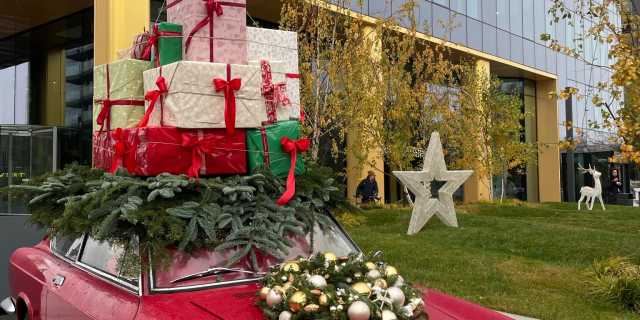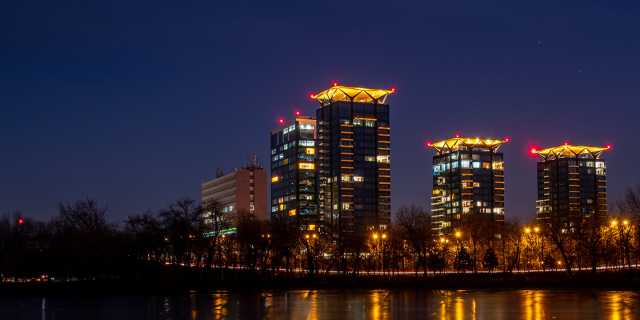1459
We meet the first documentary attestation in which the name of Bucharest appears, in a letter issued by the ruler Vlad Țepeș.
1659
Bucharest became, during the reign of Gheorghe Ghica, the Capital of Wallachia. The city will benefit, on this occasion, from a series of reconstruction and development works. At the same time, a multitude of important churches, workshops, and inns are being built. These will be grouped on individual streets, such as Lipscani, Șelari, Covaci, or Gabroveni.
1679
This year is connected to not one, but two important events in the history of the Capital. One is the inauguration of the first Romanian school, at the order of the ruler Șerban Cantacuzino, and the other is the commissioning of the first cloth factory. At the same time, the construction site for the development of the Cotroceni monastery was started.
1761
The first written record of the legend according to which the city was founded by a shepherd named Bucur, appears in a manuscript written by the missionary Blasius Kleiner. According to the document, the name Bucharest was also inspired by his name.
1812
Still functional, the oldest cafe in Bucharest, located on Covaci Street and suggestively named Cafeneaua Veche (Old Cafe), is documented in 1812, although it had been opened since 1781. It was frequented by important personalities, such as Mihai Eminescu, Ion Luca Caragiale, and King Charles II.
1847
The biggest calamity in the city took place in this year. It was the Great Fire, a devastating fire that broke out on March 23rd. Nearly 2,000 buildings were destroyed (about a quarter of the city), especially in the most important commercial area of Bucharest. The fire was started by a child who had unloaded a gun in the direction of a hay shed and could not be extinguished until a few weeks later. Testimony of this incident is the diary of the poet Anton Pann, which can be found today at the National Museum of Firefighters. The reconstruction of the city was made possible by the donations of several rulers of the time, from the country and from abroad.
1862
The union of the Romanian Principalities in 1859, under the ruler Alexandru Ioan Cuza, would bring Bucharest, three years later, the status of capital of the United Principalities. Cuza himself said that there is no other place more worthy of this title than "Bucuresci".
1864
The University of Bucharest is established, at the request of the ruler Al. I. Cuza.
1869
The first train station of the city, Filaret, is inaugurated. Three years later, the North Station was established.
1882
The cornerstone of the capital's electrification is being laid, by starting the city's first power plants. They served Cotroceni Palace and the Royal Palace, located on Calea Victoriei. In the same year, the Bucharest Stock Exchange was inaugurated on December 1st. The institution would cease its activity between 1945-1995.
1918
On the occasion of the Great Union on December 1st and the liberation of Bucharest from German occupation, King Ferdinand and Queen Maria return triumphant to the city, along with General Henri Berthelot and the Allied armies.
1948
Băneasa Airport is inaugurated, while Henri Coandă International Airport was established only in 1970.
1955
Romanian Television is born. However, the first television demonstration had been made, in 1937, by the engineer Cristian Musceleanu.
1979
On November 19th, the first subway train left the Ciurel depot and headed to the Semănătoarea station to pick up the first passengers, three days after the commissioning of the first section.
1989
Strong demonstrations are taking place on the streets of the city, and the inhabitants are positioning themselves in front of the Central Committee of the Communist Party, a mobilization that will force the dictator Nicolae Ceaușescu to leave the headquarters, thus approaching the end of the communist regime in Romania.
1999
The first mall in Bucharest is open. Currently, the number of malls and shopping centres in the Capital has increased to over 20.
2007
Rehabilitation works begin in the Old Centre, an area that houses testimonies of the past at every step.
Data for this article was obtained from historia.ro, mediafax.ro, jurnalul.ro, and wikipedia.org. Photo credit: outchill.
More on our blog
- One Insider
- Real estate: past, present and future
- Layout and style
- Real estate education
- Free time in Bucharest
- Tourist attractions in Bucharest
- The neighborhoods of Bucharest
Read also






